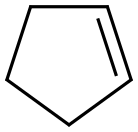A2333712
3-Chloro-1-propanol , 98% , 627-30-5
Synonym(s):
1-Chloro-3-hydroxypropane;Trimethylene chlorohydrin
CAS NO.:627-30-5
Empirical Formula: C3H7ClO
Molecular Weight: 94.54
MDL number: MFCD00002943
EINECS: 210-992-9
Update time: 2022-07-08
PRODUCT Properties
| Melting point: | -20 °C |
| Boiling point: | 160-162 °C(lit.) |
| Density | 1.131 g/mL at 25 °C(lit.) |
| refractive index | n |
| Flash point: | 164 °F |
| storage temp. | 0-6°C |
| solubility | 50g/l (slow decomposition) |
| form | Liquid |
| pka | 14.73±0.10(Predicted) |
| Specific Gravity | 1.14 |
| color | Clear colorless to yellow |
| PH | 3-4 (100g/l, H2O, 20℃) |
| Water Solubility | 300 g/L (20 ºC) |
| BRN | 773655 |
| Exposure limits | No exposure limit is set. A TLV-TWA air
value of 100 ppm (approximately 400 mg/m3)
is suggested for this compound. |
| Stability: | Stability Stable, but light-sensitive. Combustible. Incompatible with strong oxidizing agents. |
| InChIKey | LAMUXTNQCICZQX-UHFFFAOYSA-N |
| CAS DataBase Reference | 627-30-5(CAS DataBase Reference) |
| NIST Chemistry Reference | 1-Propanol, 3-chloro-(627-30-5) |
| EPA Substance Registry System | 3-Chloro-1-propanol (627-30-5) |
Description and Uses
3-Chloro-1-propanol is used in organicsynthesis to produce cyclopropane andtrimethylene oxide. It is an intermediate inthe synthesis of pharmaceuticals, agrochemicals, antiseptic agents, and dyes. It is an inhibitor of triosephosphate isomerase and glyceraldehyde 3-phosphate dehydrogenase.
Safety
| Symbol(GHS) |  GHS07 |
| Signal word | Warning |
| Hazard statements | H315-H319-H335 |
| Precautionary statements | P261-P264-P271-P280-P302+P352-P305+P351+P338 |
| Hazard Codes | Xn |
| Risk Statements | 22-36/37/38 |
| Safety Statements | 26-36-36/37/39 |
| RIDADR | UN 2849 6.1/PG 3 |
| WGK Germany | 3 |
| RTECS | UA8930000 |
| TSCA | Yes |
| HazardClass | 6.1 |
| PackingGroup | III |
| HS Code | 29055910 |




